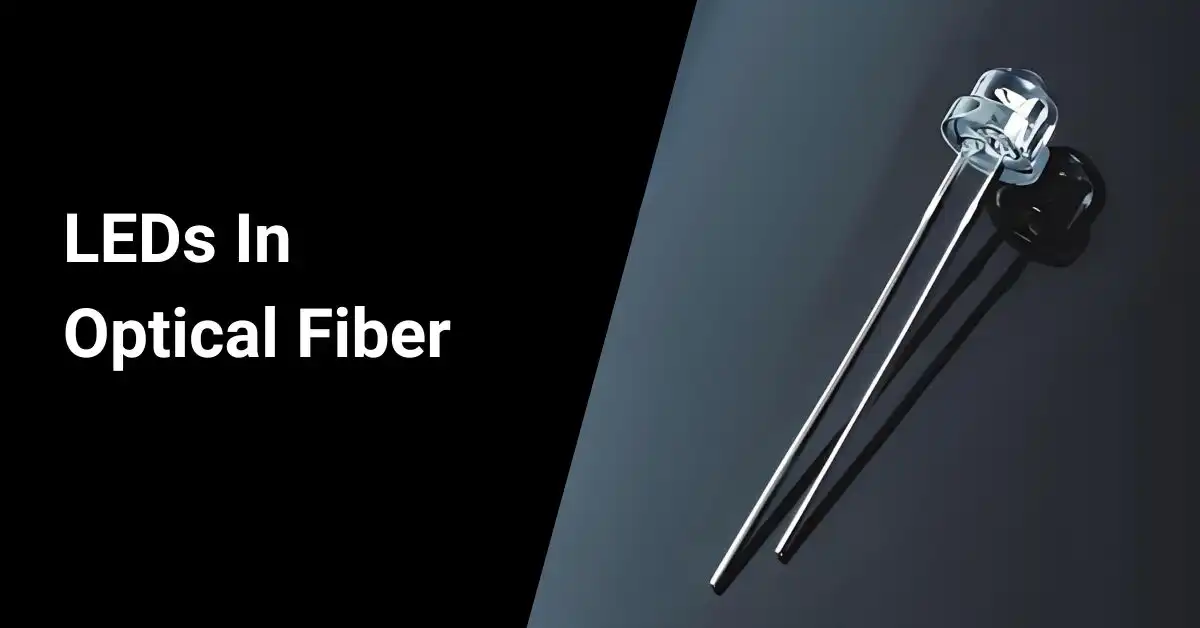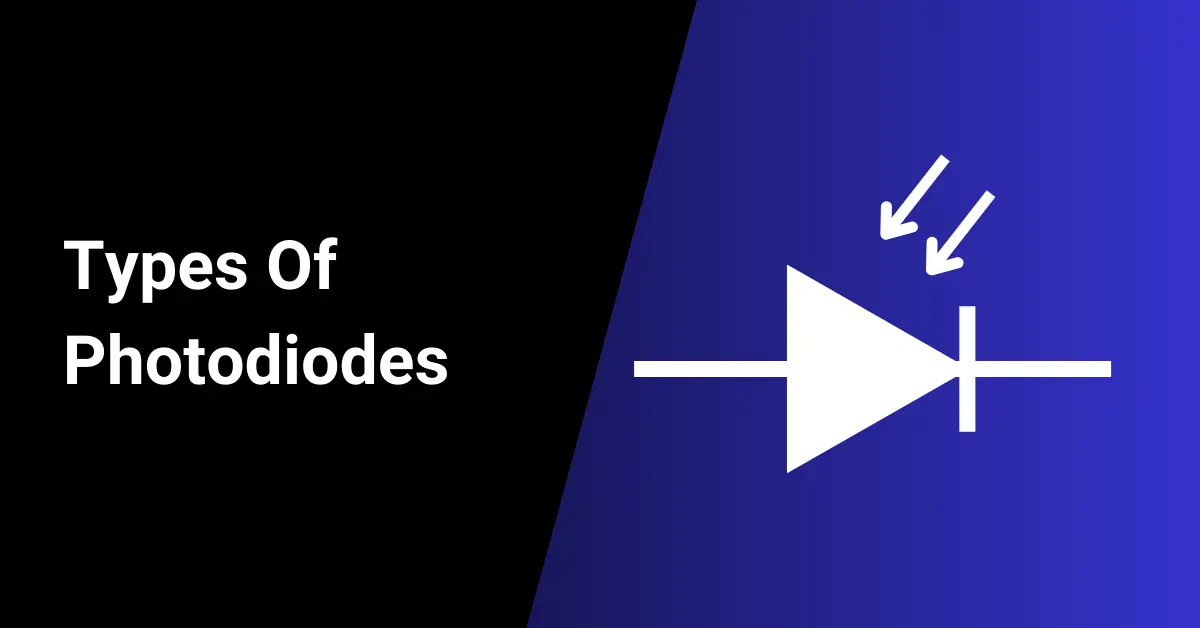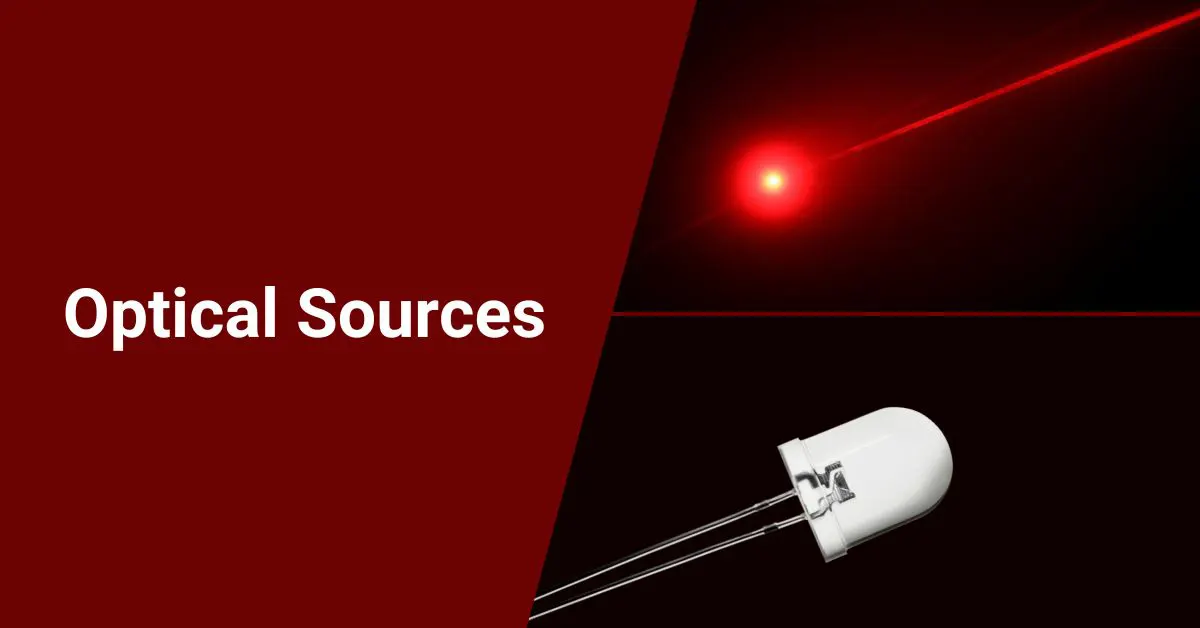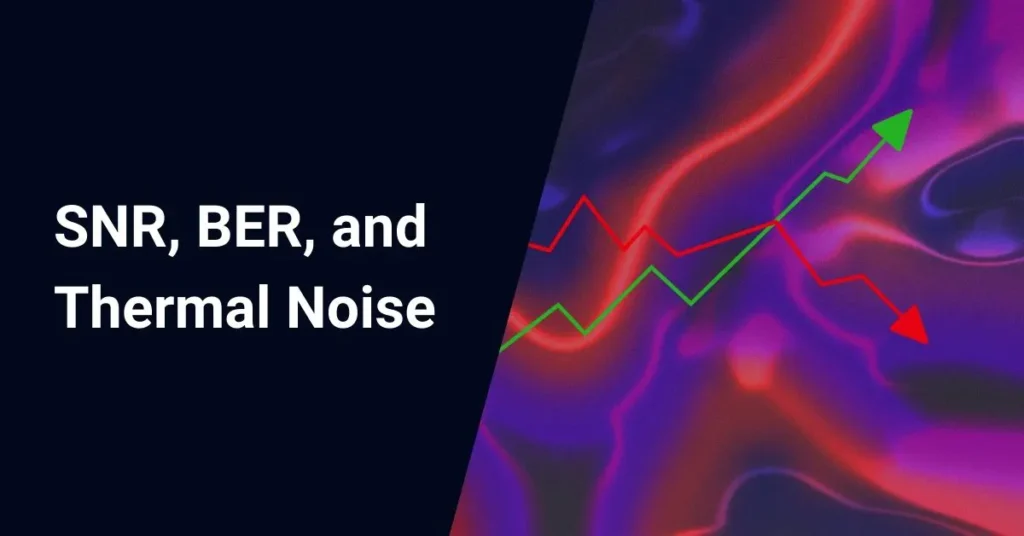Light-emitting diodes (LEDs) are semiconductor devices that emit light when an electric current flows through them. The working principle involves electroluminescence, where LEDs emit photons when electrons recombine with holes at the P-N junction.
LEDs allow current flow in the forward direction when positively biased and block current in the reverse direction. They utilize materials like aluminum gallium indium phosphide and indium gallium nitride alloys to produce different colors based on their bandgap energies.
Table of Contents
Basics of Light-Emitting Diodes (LEDs)
What are LEDs?
Light-emitting diodes, or LEDs, are tiny semiconductor devices that emit light when an electric current passes through them. Unlike old-fashioned light bulbs that get hot and burn out, LEDs produce light very coolly and efficiently.
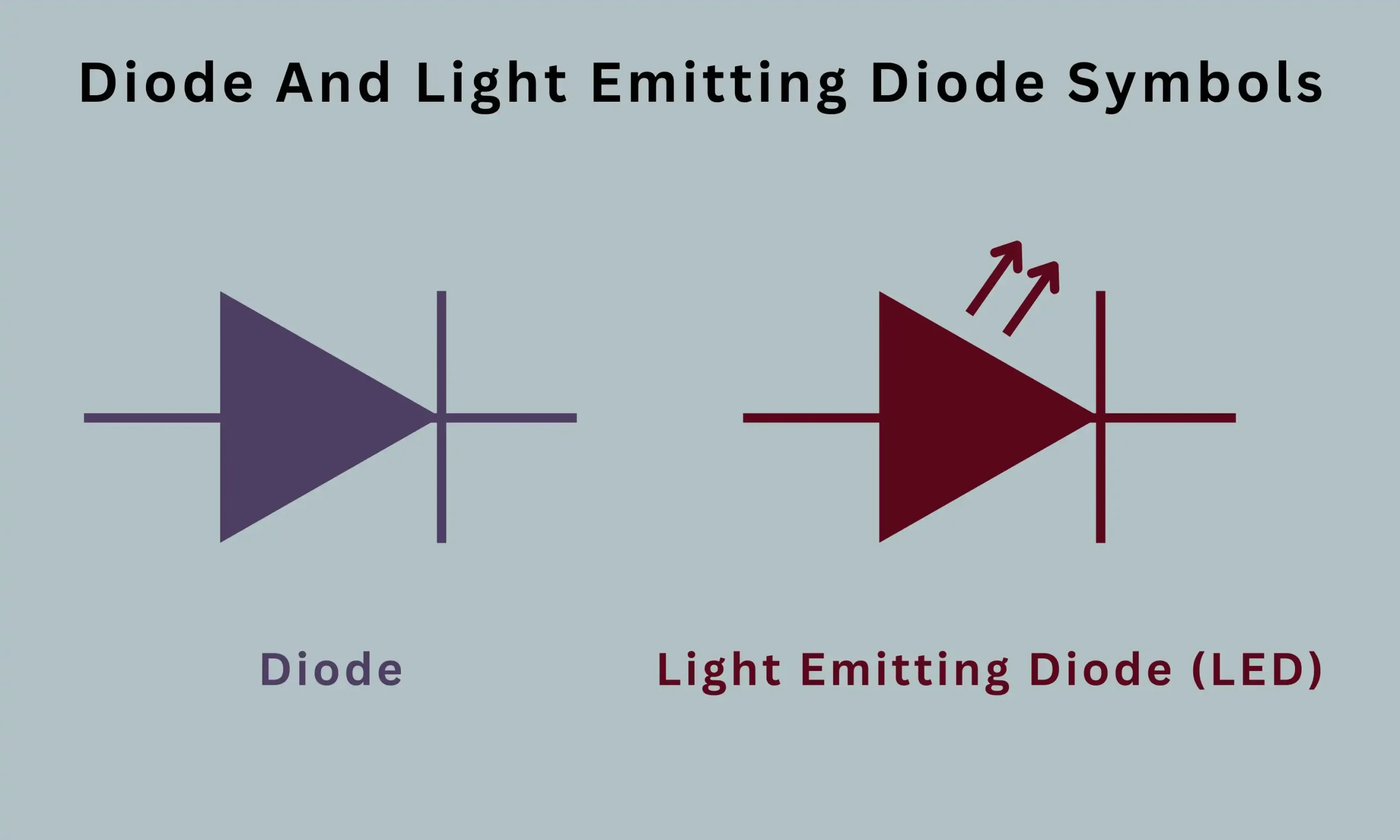
How do LEDs Work?
The secret lies in the semiconductor material inside the LED. These materials contain positive and negative charges that get excited and release energy as light when electricity flows through. Here’s a simple breakdown:
- There is a P-type and N-type semiconductor.
- The P-type has positive charges called holes.
- The N-type has negative charges called electrons.
- At the junction between the P and N regions, the electrons and holes combine.
- This releases photons or particles of light!
This process of converting electricity into light is called electroluminescence. Pretty cool, right?
Read more about semiconduter and P N Junction here
Advantages of LEDs
LEDs have many advantages that make them the preferred choice of light source today:
- Energy efficient – Consumes very little electricity.
- Long life – Can last up to 50,000 hours!
- Compact size – Very small, easy to fit anywhere.
- Durable – Not fragile like bulbs.
- Eco-friendly – Don’t emit harmful gasses.
Internal Structure of Light-Emitting Diodes
The internal structure of an LED consists of:
- P-type semiconductor layer – Contains excess holes with a positive charge.
- N-type semiconductor substrate – Contains excess electrons with a negative charge.
- Active region – The P-N junction where recombination occurs.
- Anode and cathode terminals – To connect the LED to a power source.
When forward-biased, electrons from the N-type region and holes from the P-type region recombine at the junction, releasing photons. The LED package has a transparent cover to allow the emitted light to escape.
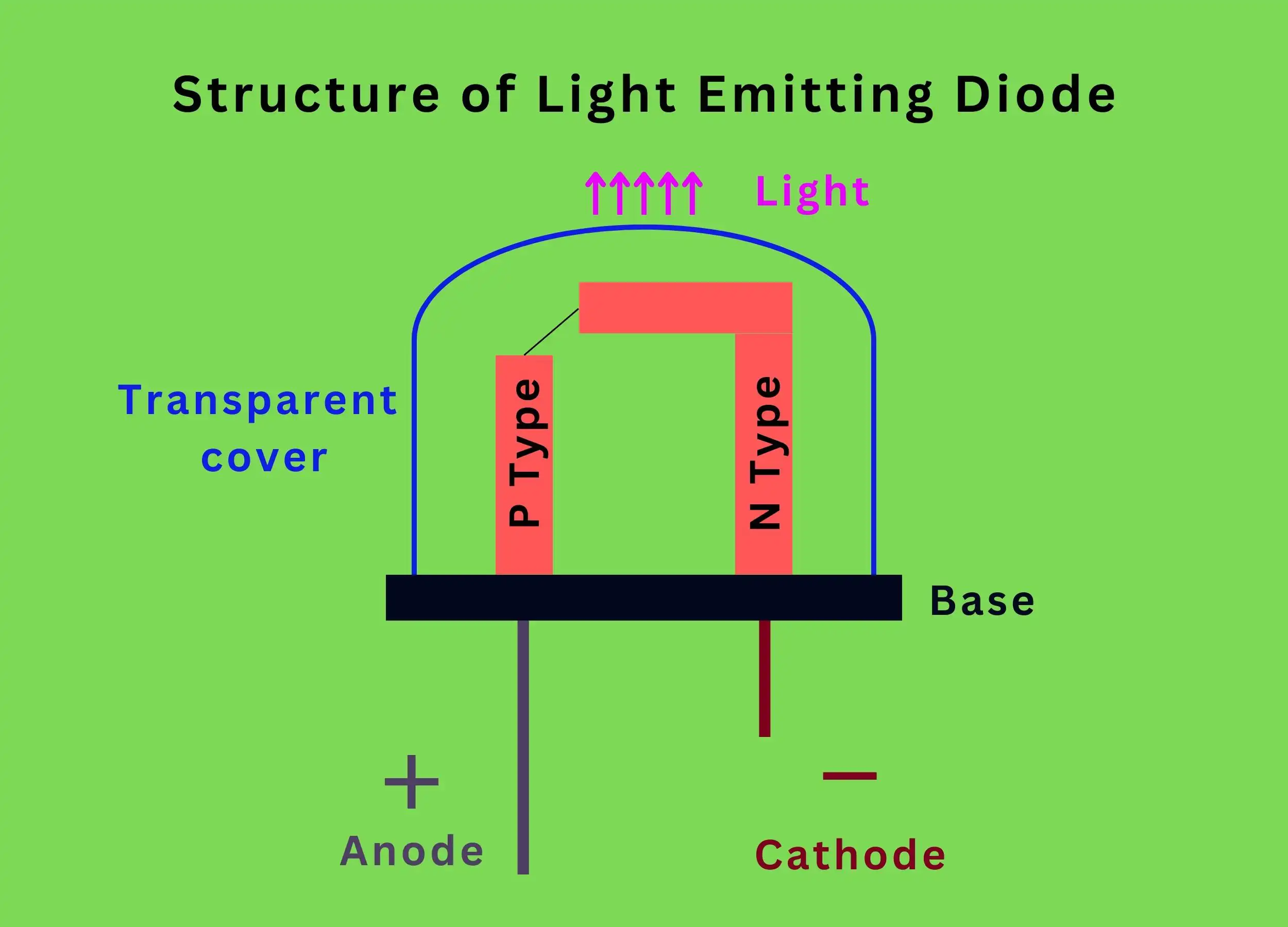
LEDs may be tiny, but they have a complex internal structure that allows them to emit light. Let’s look at what’s inside these clever semiconductor devices:
The P-N Junction
The key part of an LED is the P-N junction. This is formed by joining two specially prepared semiconductor materials:
- P-type: Contains positively charged holes
- N-type: Contains negatively charged electrons
The P-N junction provides the perfect spot for electrons and holes to recombine and release photons of light.
Putting it Together
To build an LED:
- The N-type substrate provides a base
- The P-type layer is deposited on top
- Electrodes are connected to the P and N regions
- It is enclosed in a transparent package
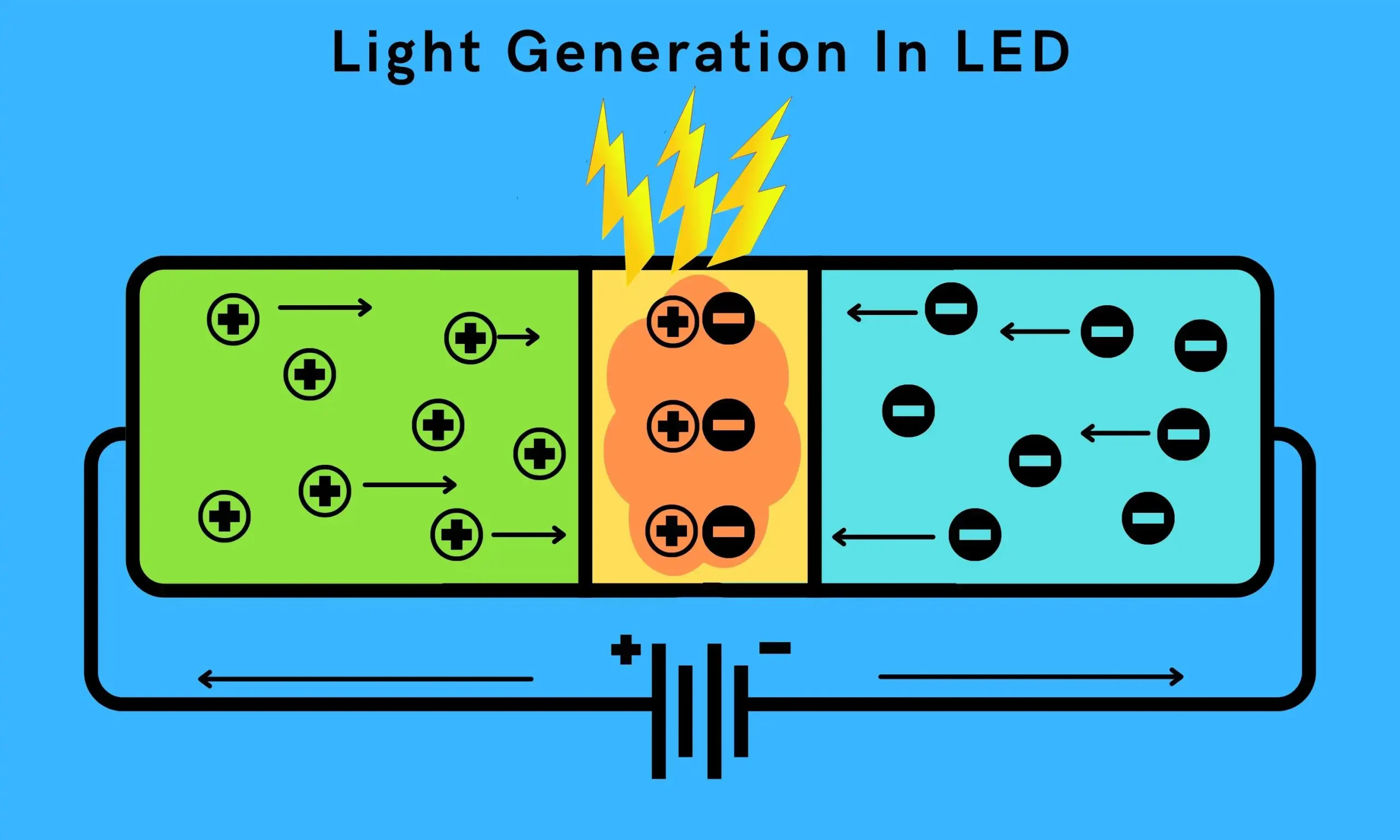
When power is applied, electrons and holes are pushed towards the junction. When they recombine, light is emitted that passes through the transparent case.
Light Generation
Here’s a simple play-by-play of light generation:
- Electric current applied to LED
- Electrons and holes move toward the junction
- Electrons fill holes at the junction
- The energy released as photons
- Photons emit through the transparent case as light
It’s like a tiny lightbulb that runs on semiconductors rather than hot filaments!
Characteristics of Light-Emitting Diodes
Key characteristics of LEDs:
- Monochromatic – Emit light of a specific wavelength based on the semiconductor material.
- Low power consumption – More efficient than traditional lighting.
- Compact size – Allow integration into miniature electronics.
- Durable – A long operating lifetime of 50,000 hours or more.
- Shock resistant – Robust against vibrations and external impact.
These properties make LEDs suitable for displays, indicators, lighting, and more.
LEDs have some amazing characteristics that make them super useful for lighting and electronics. Let’s shine a light on what makes these little semiconductors so great!
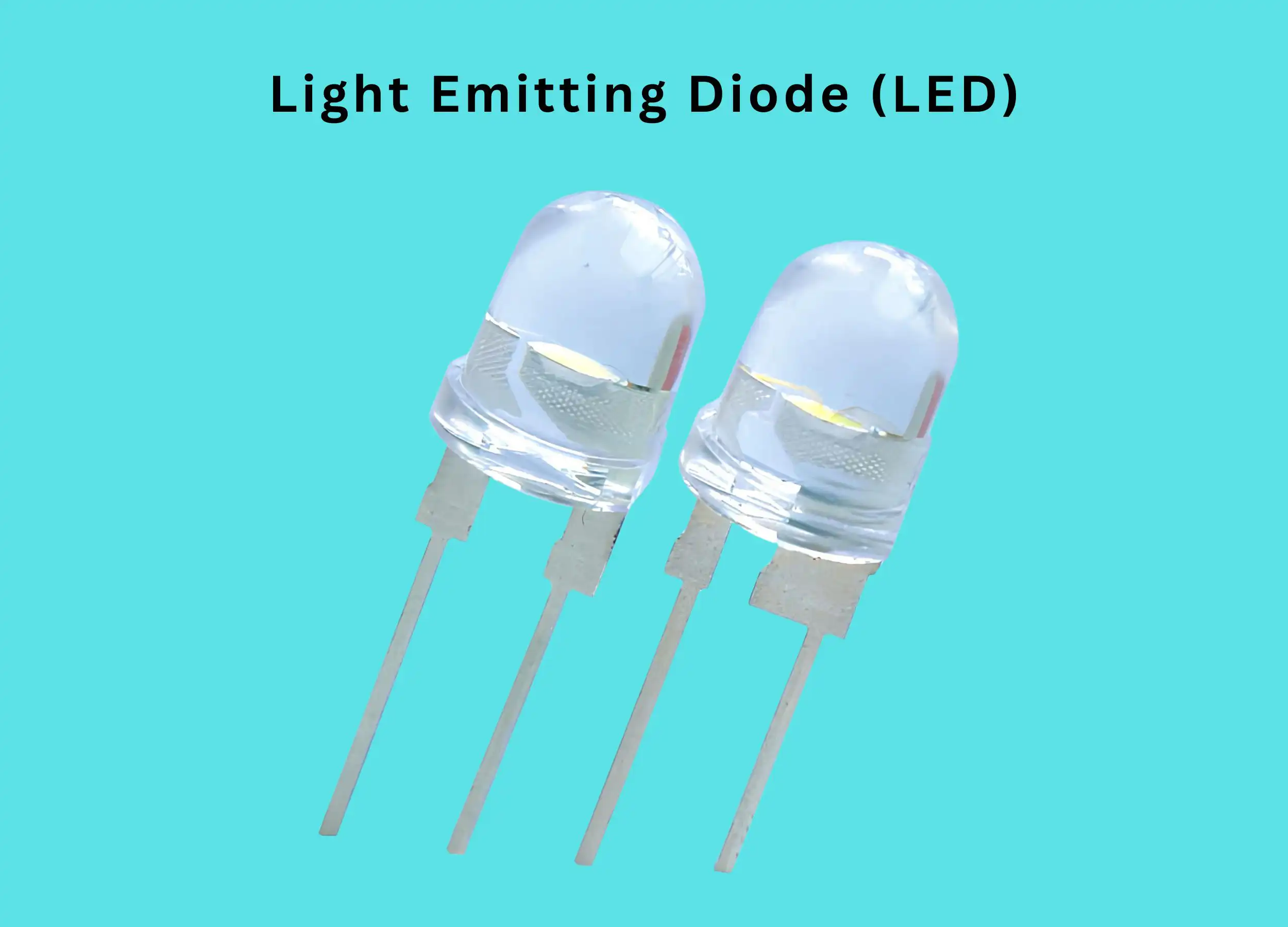
Diverse Colors
Unlike old-school light bulbs that could only produce white or yellowish light, LEDs can emit different colors:
- Red, orange, and yellow LEDs use aluminum gallium indium phosphide
- Green, blue, and white LEDs use indium gallium nitride
By tweaking the material composition, we can tune LEDs to produce any color, like a rainbow!
Energy Efficient
LEDs convert electricity into light very efficiently, without wasted heat, like an incandescent bulb. This makes them super energy-saving.
An LED light bulb can consume 80% less power than old bulbs. Now, that’s some serious cost savings!
Long Lifespan
LEDs are built to last! An average LED can keep working for 50,000 hours or more. That’s over 5 years of use without burning out!
This makes LED lights virtually maintenance-free. No more climbing ladders to change bulbs.
Durable and Compact
Unlike fragile glass bulbs, LEDs are:
- Shock resistant – can withstand vibrations and impact
- Compact – as small as a pencil tip
This allows LEDs to be used in many portable devices.
So LEDs pack a big lighting punch in a small, rugged package! No wonder they are becoming so popular. Their characteristics make them the light source of the future!
Light Emitting Diodes used in Optical Fiber Communication
In optical fiber communication systems, LEDs serve as optical sources to convert electrical signals into light pulses.
LEDs are well-suited for shorter-distance multi-mode fiber links due to their wider spectral output compared to lasers. They act as transmitters by injecting light into the fiber core.
Optical fibers are like super highways for data, letting us transmit huge amounts of information quickly. LEDs play a key role in this fiber optic technology.
LEDs as Optical Sources
In a fiber optic system, the LED converts an electrical input signal into light that gets launched into the optical fiber. This light carries the data!
The LED acts like a tiny transmitter, receiving electrical signals and encoding them as flashing light pulses. Pretty neat!
Advantages of LEDs in Fiber Optic Communication
LEDs have some great benefits that make them well-suited for use in fiber optic communication systems. Let’s look at why LEDs are the preferred light source for transmitting data over optical fibers.
- Compact Size
- LEDs are super small, allowing them to be easily coupled to the tiny cores of optical fibers. Their small emitting area matches well with the small diameter fiber cores. This maximizes light injection into the fiber.
- Cost Effective
- Producing LEDs is relatively affordable compared to other light sources like lasers. This makes LEDs a cost-effective option for cheaper, shorter-distance fiber links.
- Energy Efficient
- LEDs convert electrical currents to light very efficiently. This results in lower power consumption compared to lasers or other sources. Being energy efficient is a big plus!
- Reliable
- LEDs are solid-state devices with no fragile filaments or glass. This makes them resistant to vibrations and shocks. LEDs can withstand fluctuating temperatures and harsh conditions. This high reliability is a key advantage.
- Easy Modulation
- The output light from LEDs can be easily modulated and encoded with data by varying the input electrical signal. This allows rapid flickering for high-speed data transmission.
- Directional Emission
- Unlike ordinary light bulbs that spread light everywhere, LEDs emit light in a narrow, directed beam. This makes it easy to capture the light into optical fibers.
So, in summary, LEDs are the small, efficient, reliable light sources that power fiber optic communications! Their advantages make them an ideal choice for transmitting data.
Difference between laser and LED in optical fiber communication

Applications of LEDs in Fiber Optic Communication
- As inexpensive light sources for short-distance communication links.
- Fiber monitoring tools are used to test attenuation and diagnose faults.
- For visual alignment of fibers during installation and maintenance.
- In research and education to study fiber optic principles.
LEDs might seem like simple little lights. However, their unique properties make them extremely useful for optical fiber applications! Here are some of the key ways LEDs are utilized in detail:
Transmitting Signals
The main use of LEDs is to convert electrical signals into light to transmit data over optical fibers. They act like tiny lightbulbs flashing on and off rapidly based on the input data signal.
Testing and Monitoring
LEDs are used in fiber optic test equipment to measure the health and performance of links. Portable LED sources help test attenuation, locate faults, and identify breaks in the cable.
Visual Alignment
During installation and maintenance, high-brightness LEDs inject visible red light into fibers. This allows easy visual alignment and interconnection of the microscopic glass fiber cores.
Education and Training
Low-cost LEDs provide versatile light sources for optics experiments and demonstrations. Students can observe light coupling into fibers and understand transmission principles.
Prototyping and R&D
Researchers use LEDs to prototype and test new types of optical fibers, transmission methods, and sensing applications before developing costly custom lasers.
The versatility of LEDs allows them to serve both specialized and general purposes in fiber optic systems. They truly are a fundamental enabling technology behind the scenes!
Conclusion
LEDs have revolutionized both lighting and optical fiber communications due to their diverse colors, high energy efficiency, long operating lifetime, compact size, and durability.
By taking advantage of semiconductors’ properties and utilizing techniques like bandgap engineering, LEDs are able to convert electricity into customized wavelengths of light efficiently. These unique traits have made LEDs a ubiquitous choice for visible light sources, indicators, displays, and short-distance optical transmitters.
Going forward, continued material innovation is likely to extend LEDs’ capabilities and applications further across various industries. LEDs demonstrate how simple semiconductor physics concepts can be harnessed to develop technologies that profoundly impact daily life.
FAQ
What are the limitations of LEDs in fiber optic communication compared to lasers?
While LEDs offer advantages like cost and durability, they have limitations compared to lasers:
➤ Lower power: Limits transmission distance and data rate capacity.
➤ Broader spectrum: Makes efficient coupling into the fiber core more challenging.
➤ Wider beam divergence: Requires careful coupling techniques for optimal transmission.
What are the basic LED configurations used as an optical source?
Several configurations exist, but common ones include:
➤ Surface-mount LEDs (SMD): Compact and easily integrated into devices.
➤ Edge-emitting LEDs (ELED): Offer higher power but larger size.
➤ Vertical-cavity surface-emitting lasers (VCSELs): Combine advantages of LEDs and lasers with good coupling properties.
Which is better for long transmission, LED or laser?
Lasers are generally better for long transmission due to their:
➤ Higher power: Enables longer distance signal travel with less attenuation.
➤ Narrower beam: Offers more focused light for efficient coupling and reduced transmission loss.
What are the emerging applications of LEDs in fiber optics?
LEDs are finding new uses beyond traditional applications due to their advantages:
➤ Biomedical sensors: Miniature LEDs for minimally invasive procedures.
➤ Underwater communication: LEDs with wavelengths suitable for water penetration.
➤ LiDAR systems: LEDs as light sources for 3D imaging and sensing.
Can optical fibers transmit any color of light?
While optical fibers can technically transmit a wide range of wavelengths, their efficiency varies depending on the color. Fibers are designed with specific core materials and dopants optimized for certain wavelength ranges. For instance, standard telecom fibers are optimized for near-infrared wavelengths (around 1300 nm and 1550 nm) used in data transmission. While they can still transmit visible colors, the attenuation might be higher, leading to dimmer or distorted colors. Specialized fibers designed for specific color ranges exist, but they are less common and might have higher costs.


